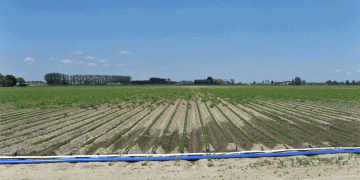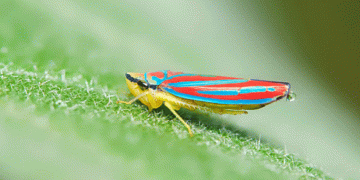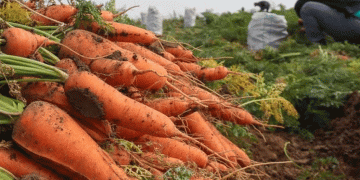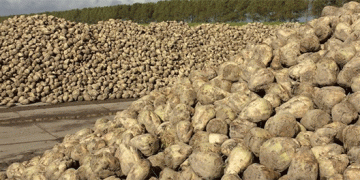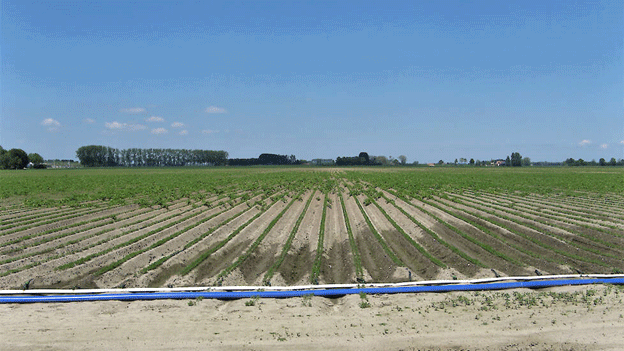The shift from traditional irrigation methods to advanced techniques like drip irrigation is a critical step for modern agriculture. However, recent findings from the 2022-2023 interim report of the Waterwerk Public-Private Partnership (PPP) project reveal that effective implementation of drip irrigation requires more than just the installation of new equipment. Here’s an in-depth look at these findings and what they mean for farmers, agronomists, and agricultural engineers.
Understanding Drip Irrigation: Beyond Installation
Drip irrigation is praised for its efficiency in water use compared to traditional methods such as sprinkler irrigation. The Waterwerk project, a four-year initiative launched in 2022, is investigating various irrigation techniques to assess their benefits and challenges. According to the interim report, a key takeaway is that adopting drip irrigation is not just about purchasing new technology but also about changing one’s approach to irrigation management.
1. The Necessity of Proactive Planning
One of the main conclusions from the Waterwerk project is the importance of forward planning for drip irrigation systems. Unlike traditional systems where irrigation is often reactive, drip irrigation requires a proactive approach. The report notes that irrigation should begin at the first signs of soil drying rather than waiting until the soil becomes overly dry.
Research from the Journal of Irrigation and Drainage Engineering supports this view, showing that early and consistent application of water through drip systems can lead to better soil moisture management and improved crop yields. According to a study published in Agricultural Water Management, proactive drip irrigation practices can increase crop yields by up to 30% compared to reactive methods.
2. Managing Soil Moisture Effectively
Drip irrigation systems are designed to deliver water directly to the plant roots, which can prevent over-application and reduce water waste. However, as the Waterwerk project highlights, this efficiency can only be achieved with careful management. If drip irrigation is started too late, the soil may already be too dry for the system to restore adequate moisture levels.
A report from ScienceDirect indicates that effective soil moisture management is crucial for the success of drip irrigation. The study emphasizes that maintaining optimal soil moisture levels through regular monitoring and adjustment is essential for maximizing the benefits of drip irrigation systems.
3. The Cost-Benefit Analysis of Drip Irrigation
The Waterwerk project also addresses the financial aspects of adopting drip irrigation. While the initial investment in drip irrigation systems can be significant, the long-term benefits often outweigh the costs. According to The International Journal of Agricultural Sustainability, the return on investment for drip irrigation systems can be as high as 5:1, with significant savings on water and energy costs over time.
A recent report from the Food and Agriculture Organization (FAO) highlights that while drip irrigation systems require a higher upfront investment, they lead to long-term savings through reduced water use and increased crop yields. This aligns with the Waterwerk findings that the cost-effectiveness of drip irrigation improves with proper planning and management.
4. Case Studies and Future Research Directions
The Waterwerk project, conducted in the Betuwe region of the Netherlands, offers valuable insights for other regions considering water-saving measures. The project is supported by Vitens, Provincie Gelderland, Hagelunie, and BO Akkerbouw, and involves collaboration with the Louis Bolk Institute, Ekoboerderij De Lingehof, Acacia Water, and Broere Irrigatie bv.
Future research from this project will likely provide further knowledge on the best practices for implementing drip irrigation systems and the potential for these practices to be adapted in other regions. According to Environmental Science & Policy, case studies from such projects are crucial for developing scalable solutions for water management in agriculture.
5. Learning from the Waterwerk Project
Farmers and agricultural professionals can learn from the Waterwerk project’s findings by focusing on:
- Early Implementation: Begin irrigation as soon as you detect soil dryness to maintain consistent soil moisture.
- Training and Education: Invest time in understanding the best practices for drip irrigation systems through resources like Groen Kennisnet and relevant agricultural courses.
- Long-term Planning: Consider the long-term costs and benefits of drip irrigation systems to ensure a successful investment.
Transitioning to drip irrigation systems offers significant benefits for water conservation and crop productivity, but success requires more than just installing new technology. As highlighted by the Waterwerk project, effective implementation involves careful planning, proactive soil moisture management, and a thorough understanding of both the financial and operational aspects of drip irrigation.
Farmers, agronomists, and agricultural engineers should focus on these factors to maximize the potential of drip irrigation systems and contribute to more sustainable agricultural practices.
